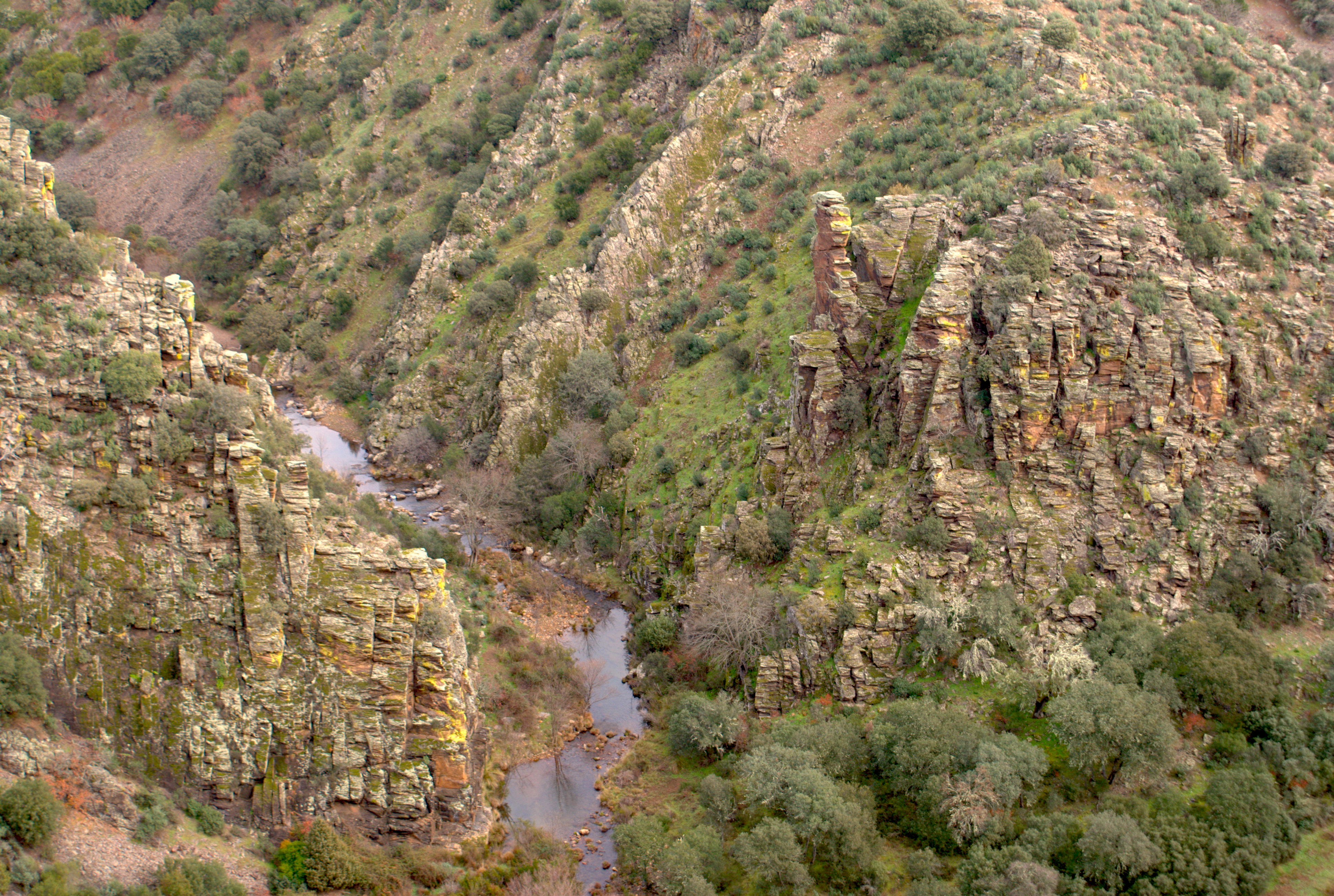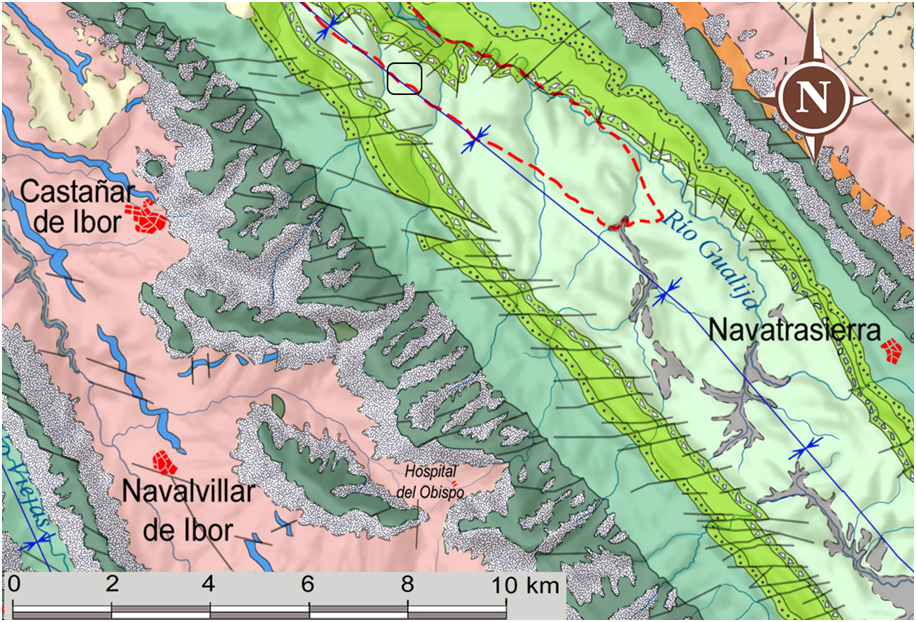LOCATION AND ACCESS
To reach the geosite, take a forest track that leaves the EX-118 to the right towards Bohonal de Ibor, at kilometre 37. Follow the Casitas de Papel y del Castañar de Ibor geological route. The geosite is just to the left of the road, after 12 km from the start of the road, and is the final part of the geological route.
The path is a dirt forest track that in some sections is impracticable if you are not on all-terrain vehicles.
ATTRACTIONS OF THE VISIT
The layers of slate that outcrop in the area have a well-developed foliation, which is why they have traditionally been used for the construction of the houses and corrals in the area, as well as their floors and boundaries. The name “Casitas de Papel” is appropriate in view of the laminated morphology of the slates used.
The site has a high visual quality, as well as a high floristic importance due to its variety of species, typical of these encased valleys. In particular, the rocky crests perforated by the river Gualija can be seen, which serve as nesting sites for a wide variety of birds. Relevant biotic elements are the thermo-Mediterranean scrubland and holm oak groves. Among the fauna of note are the medium-sized horseshoe bat, Egyptian vulture and Bonelli’s eagle.
GEOLOGICAL INTERPRETATION


